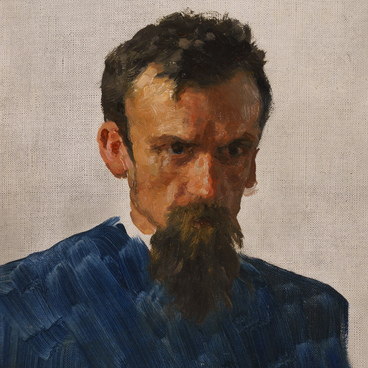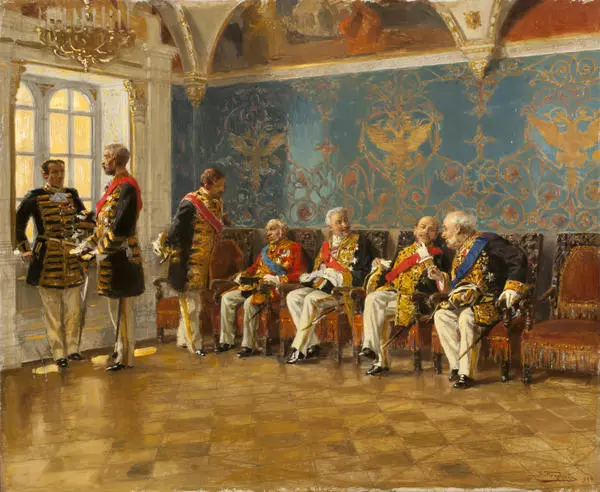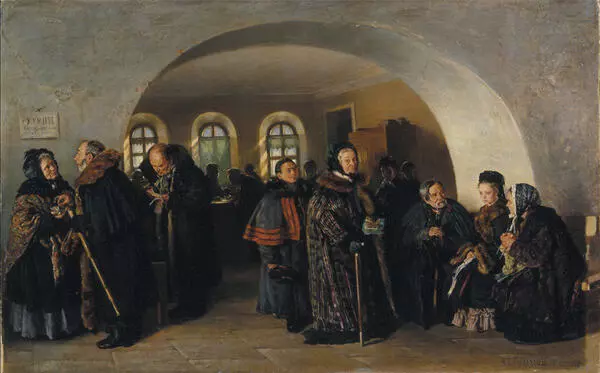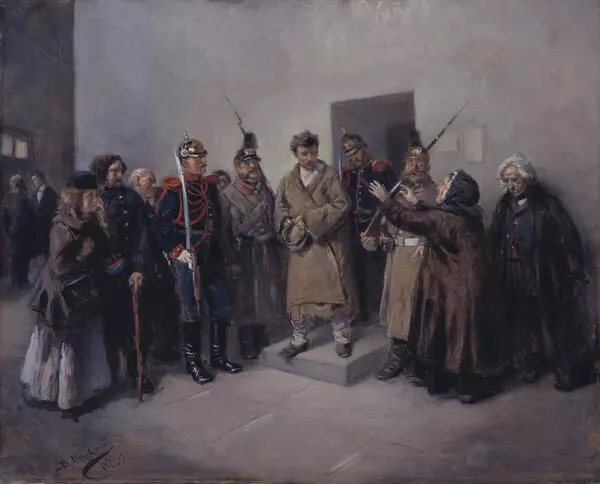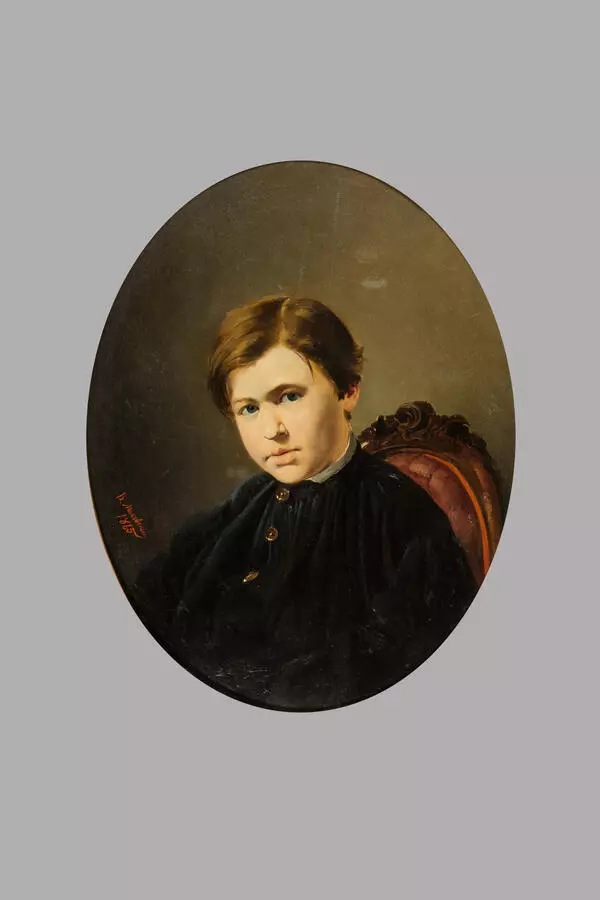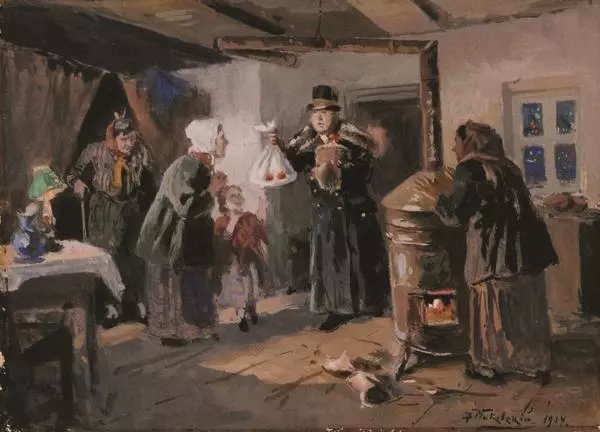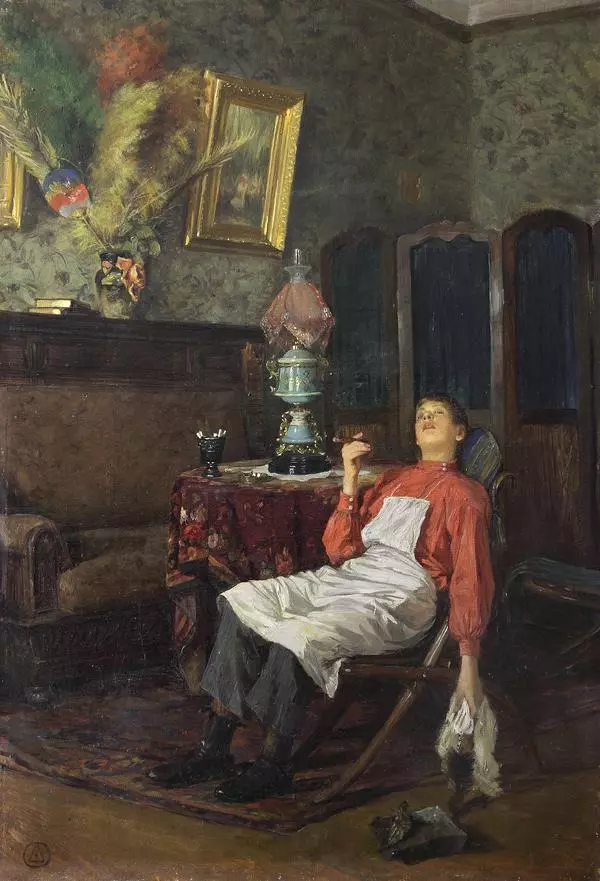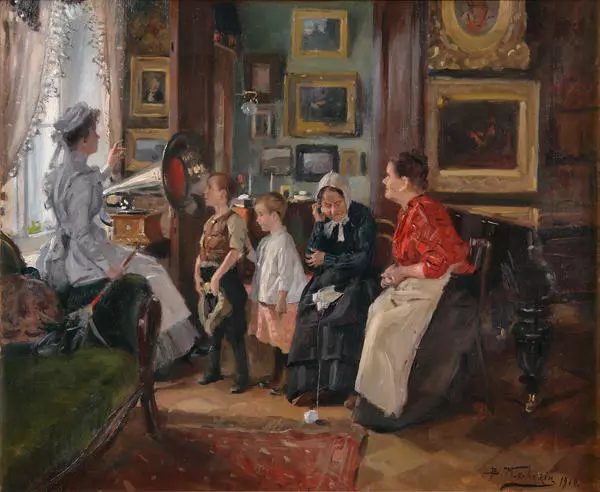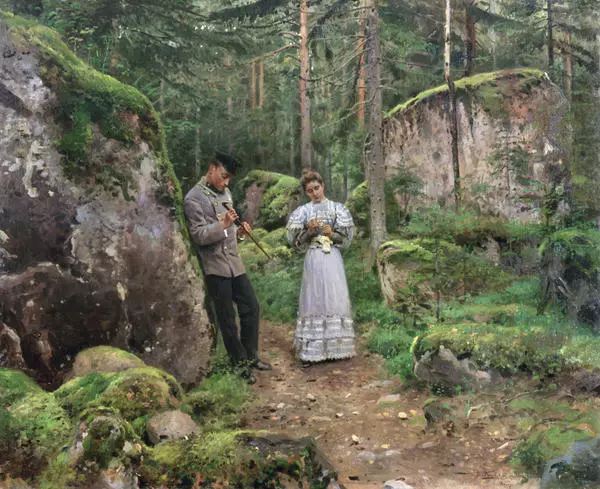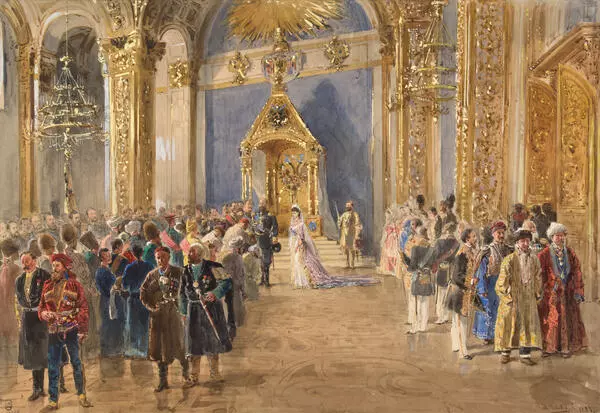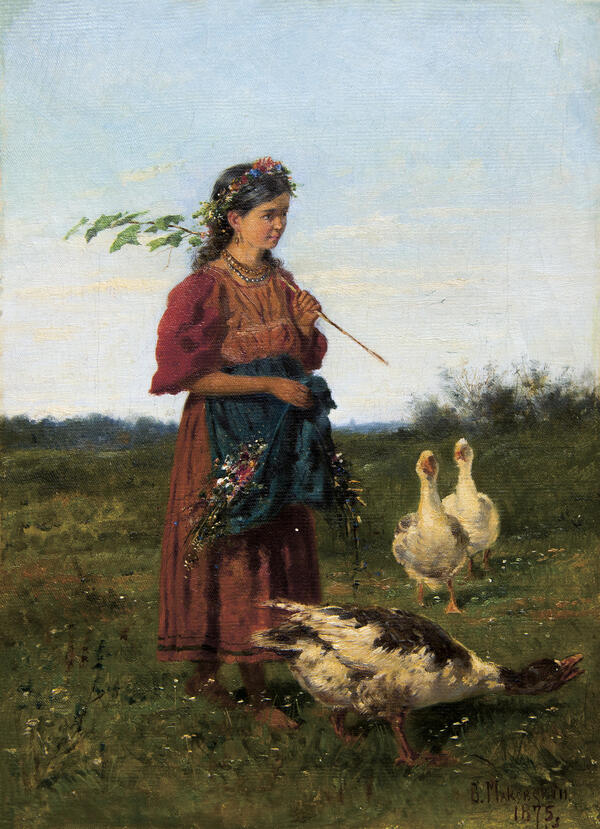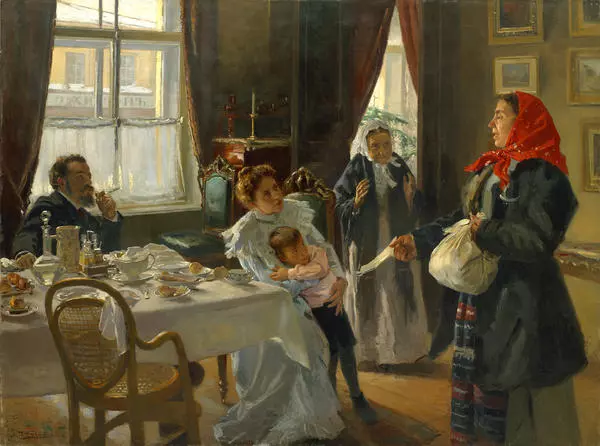Vladimir Yegorovich Makovsky, born in 1846, in his works captured characters vividly confirming the diversity of the ‘enigmatic’ Russian psyche. The artist who practiced the genre art, made the first steps in that direction by painting sketches from the life of ordinary people.
He was not alone in that endeavor. The same approach was followed by Vassily Andreevich Perov, one of the founders and ideologies of the Association of Itinerant Art Exhibitions.
Vladimir Makovsky, like Vassily Perov, raised critical social questions. His art was targeted at searches of people’s happiness and justice. By painting portraits and genre pictures, he offered the viewer a high degree of compassion for the model. He had a special gift of making visible the feelings hidden deep in the souls of people, he could balance on the edge of dramatism and lyrism.
Most of all Vladimir Makovsky liked to paint young children and teenagers. His works shows admiration for his models.
Vladimir Makovsky painted his sketch An Orphan Girl in 1913. With the brightness of the character, it rather reminds paintings of Itinerant artists who created their works in the second half of the 19th century. The painter focuses on almost adult seriousness of the model that is surprisingly blended with almost childish touching nature.
The girl has inquiring and slightly shy glance. She seems to be on the alert, any time ready to take off running away if she seems to feel danger.
Her wild hair, weather-beaten face and plain dress tell the viewer that the life of this girl is full of hardships and deprivation. Having lost her parents at an early age, she has to independently take care of herself. However, in spite of difficult orphan destiny, the young girl retained her typically childish enchantment.
The inner world of the model, her conspicuous appearance and emotions depicted on her face, combined with the mastership of the painter, make this sketch a unique work of art. Presence of the two mutually exclusive traits contributes to the socio-critical trend typical for the early days of the Itinerant movement. On parallel with the psychological portrait and open lyrism of the image, the trend was the cornerstone of the art of realistic portrait of the second half of the 19th century that developed under the sign of critical realism.
He was not alone in that endeavor. The same approach was followed by Vassily Andreevich Perov, one of the founders and ideologies of the Association of Itinerant Art Exhibitions.
Vladimir Makovsky, like Vassily Perov, raised critical social questions. His art was targeted at searches of people’s happiness and justice. By painting portraits and genre pictures, he offered the viewer a high degree of compassion for the model. He had a special gift of making visible the feelings hidden deep in the souls of people, he could balance on the edge of dramatism and lyrism.
Most of all Vladimir Makovsky liked to paint young children and teenagers. His works shows admiration for his models.
Vladimir Makovsky painted his sketch An Orphan Girl in 1913. With the brightness of the character, it rather reminds paintings of Itinerant artists who created their works in the second half of the 19th century. The painter focuses on almost adult seriousness of the model that is surprisingly blended with almost childish touching nature.
The girl has inquiring and slightly shy glance. She seems to be on the alert, any time ready to take off running away if she seems to feel danger.
Her wild hair, weather-beaten face and plain dress tell the viewer that the life of this girl is full of hardships and deprivation. Having lost her parents at an early age, she has to independently take care of herself. However, in spite of difficult orphan destiny, the young girl retained her typically childish enchantment.
The inner world of the model, her conspicuous appearance and emotions depicted on her face, combined with the mastership of the painter, make this sketch a unique work of art. Presence of the two mutually exclusive traits contributes to the socio-critical trend typical for the early days of the Itinerant movement. On parallel with the psychological portrait and open lyrism of the image, the trend was the cornerstone of the art of realistic portrait of the second half of the 19th century that developed under the sign of critical realism.
